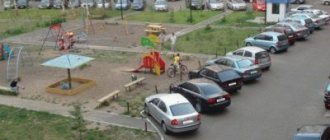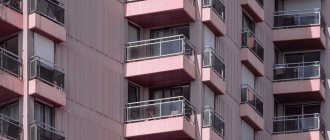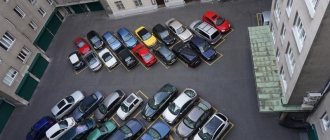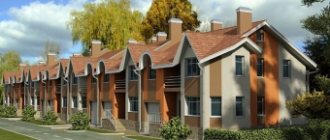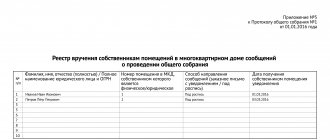Home/Adjacent area/Improvement
Purchasing real estate in an apartment building gives the owner rights not only to living space, but also to common property (elevator, landing, etc.), as well as to the adjacent territory.
Attention
The scale of the local area is determined by the local land management committee in accordance with urban planning documents. The Land Code allows the territory to be transferred for permanent use to an organization, provided that landscaping is carried out. If home owners decide to create a property association, they will be able to privatize land space free of charge and organize care for the local area of an apartment building in accordance with personal preferences.
Normative base
In accordance with current legislation, the space on which an apartment building is located is the common property of the homeowners, but provided that the adjacent territory has an established boundary and is registered in the cadastral register before March 1, 2005. Decisions regarding real estate and yard are the responsibility of citizens.
Attention! If you have any questions, you can chat for free with a lawyer at the bottom of the screen or call Moscow; Saint Petersburg; Free call for all of Russia.
The rules for the operation of the adjacent land area of an apartment building and the rules governing the interaction of owners are contained in the following legislative documents:
- The Constitution of the Russian Federation guarantees the right to environmental safety.
- The Housing Code reflects the procedure for exploitation of common land.
- The tax code is required to calculate tax.
- Federal Law No. 78 “On Land Management”, adopted in June 2001, talks about land surveying.
- Federal Law No. 221 “On Cadastral Activities,” which was approved in July 2007, reveals the procedure for privatization.
Please note:
In order to prevent negligence on the part of the management company or other organization, owners of apartments in multi-storey buildings should be familiar with their rights.
Who owns the adjacent territory of an apartment building?
Typically, the entire plot of land on which a building designed for a large number of owners is located is the property of the residents. You can find out who owns the adjacent territory of an apartment building from the management company, cadastral chamber, multifunctional center or HOA.
If the local area is municipal, then residents of an apartment building can use it in accordance with an agreement that includes information about the powers of the parties, the procedure for ownership, the possibility of renting, etc.
Additional Information
Residents who have registered shared ownership of a land plot do not have to worry that a grocery store, parking lot will be opened on the common area, or a new residential building will begin to be built. Such actions are possible only with the written consent of the property owners.
Maintenance of the local area
The local area is a piece of land that is attached to one or another residential building. The main purpose of such a territory is the placement and maintenance of a residential building or an entire complex, as well as all structures and buildings of a technical and economic nature that are associated with this residential area or a separate house. The adjacent territory should belong to the entire house or several houses, but in no case to a separate part of the house (apartment, block).
The local area must meet sanitary, hygienic, aesthetic, urban planning and fire safety requirements. But the area near the house is not always kept in proper condition.
In accordance with clause 3.5.11. “Rules and norms for the technical operation of the housing stock”, approved by the Decree of the State Construction Committee of the Russian Federation dated September 27, 2003 No. 170, the territory of each household, as a rule, should have:
- a utility area for drying clothes, cleaning clothes, carpets and household items, and there should also be poles with a device for drying clothes, rods for drying clothes, hangers, a box with sand, a garbage tank and a table with benches;
- a recreation area for adults;
- children's playgrounds and sports grounds with landscaping and the necessary equipment of small architectural forms for children's summer and winter recreation.
The same rules establish that cleaning of areas, gardens, courtyards, roads, sidewalks, courtyards and intra-block driveways must be carried out by housing maintenance organizations. Cleaning is usually carried out either in the morning or evening hours.
In accordance with clause 2.11.
What is considered landscaping of the local area?
Improvement of the local area of an apartment building adjacent to the building includes:
- installation of playgrounds, sandboxes and other similar facilities;
- installation and repair of sidewalks;
- maintaining an attractive lawn;
- leaf cleaning;
- planting flowers, trees, shrubs and their subsequent care.
Attention
The list contains the main types of work, but is not exhaustive. Violators of the rules for landscaping the local area of an apartment building may be subject to administrative liability.
The adjacent space is the common property of the residents of the apartment building. In many cities, local authorities organize events aimed at improving homes. Support can be expressed in kind (seedlings, children's playground) or in monetary terms.
Residents independently make decisions about concluding an agreement with the management company, about organizing a homeowners association, as well as options for improving the existing space adjacent to the apartment building: installing a playground, planting a flower bed, erecting a fence, etc.
Rules for landscaping areas participating in projects
Based on the provisions of the order of the Ministry of Construction and Housing and Communal Services, improvement work is divided into two groups:
- The minimum type of work is paid from the Federal program. The state finances the repair of roads and driveways in courtyards, the installation of garbage containers, trash cans, benches, and the installation of modern area lighting systems.
- Funds from the local budget are allocated for additional improvement, and money collected by citizens living in this yard is also transferred. These types of work include installing a children's playground, creating a comfortable resting place for adults, designating and fencing an area for walking pets. In the plan of additional activities, residents can include the installation of parking spaces or parking inside the yard, as well as all landscaping activities (planting trees and bushes, planting flower beds).
The form and extent to which citizens will participate in the implementation of planned activities is determined by the decision of the relevant local administration bodies in each locality. For example, in the city of Irkutsk, residents take an active part in improving their own yard during cleanup days. The Samara city authorities decided that citizens need to contribute 1% of the amount of funds provided for additional types of work. This amount can be taken from funds transferred by residents to the management company account.
That is, co-financing for the implementation of the improvement program is provided from three sources: the federal, municipal budget and funds from citizens. To the question “is it legal to collect funds from residents for landscaping the yard in accordance with the federal program,” it is worth answering unequivocally, yes, it is legal. Only the degree of participation in joint financing for additional types of work is determined at the municipal level.
Who should landscape the local area of an apartment building?
Housing Code, namely, Art. 36 states that the land plot on which the dwelling is located, as well as landscaping and landscaping facilities that require regular maintenance and upkeep, are the common property of the property owners. The size of the plot is determined taking into account the requirements set out in the Land and Town Planning Codes.
Decree of the Government of the Russian Federation No. 491, adopted on August 13, 2006, states that common property includes the care of landscaping and improvement facilities, the location of which is a plot that is part of the common property.
IMPORTANT
Depending on the decision made at a collective meeting, the maintenance and improvement of the local area of an apartment building can be entrusted to a management company or a homeowners’ association.
Residential area of the apartment building: what is it and who owns it?
Adjacent territory is a clearly defined plot of land located near an apartment building and belonging to common property. The zone includes many elements: a platform, parking, fencing, green spaces, and so on.
As a rule, a yard improvement project includes not only organization, but also maintenance of the territory:
- the plot of land on which the house is located;
- landscaping elements (trees, shrubs, lawns, flower beds);
- transformer substation;
- children's and sports grounds;
- parking;
- fire passage.
This list is not exhaustive; other facilities necessary for the comfortable living of residents may be included.
Who pays?
According to the Supreme Court of Russia, payment for the improvement of the adjacent space of an apartment building that has undergone state cadastral registration is the responsibility of the apartment owners.
The Housing Code states that homeowners must maintain and maintain common property. Consequently, if citizens, by signing an agreement, have transferred powers to a management company or other service company, they must pay a certain amount monthly for the fact that their duties are performed by other people.
Additional Information
The most questions are raised by multi-apartment buildings built before 2005, since they were not included in the state cadastral registration. It turns out that, on the one hand, the land is municipal, and on the other, the property owners jointly own the local area. Management companies continue to add bills for improvement of even an undeveloped site. According to the Arbitration Courts, the behavior of service organizations is legal and reasonable.
Rules for landscaping the local area of MKD
Current legislation requires that residents of apartment buildings adhere to the following rules for landscaping the local area of an apartment building:
- Benches, playgrounds and other objects were painted in a modern manner.
- Waste containers were installed.
- They cleaned up the trash.
- The adjacent land area was cleared of snow and ice.
- Organized the drainage of water formed as a result of precipitation.
- They created playgrounds and looked after them.
- Green spaces were planted.
- A parking lot has been installed.
However, we must not forget about the following restrictions:
- it is not allowed to increase parking for cars by reducing the area of green spaces;
- garbage containers can only be placed on hard surfaces in strictly designated areas;
- It is prohibited to organize car washes, car repair shops, cafes, kiosks and other retail outlets in the local area;
- industrial buildings and paid parking lots cannot be located in the courtyard of an apartment building.
If residents decide to install a fence, they must remember that it cannot be made continuous or higher than 60 cm.
Rules and regulations
According to the Decree of the State Construction Committee of the Russian Federation No. 170 dated September 27, 2003 “On approval of the Rules and Standards for the Technical Operation of the Housing Stock,” the following standards for the improvement of residential areas adjacent to apartment buildings were approved:
- promptly paint benches, playgrounds, etc.;
- install garbage containers and remove garbage in a timely manner;
- clear the local area of ice, snow, and icicles;
- remove water formed after precipitation;
- plant green spaces;
- in the summer, organize cleaning of the local area: sweep, wash and water the plants in the early, morning or late evening hours;
- in hot weather, water sidewalks at least 2 times a day;
- in winter, promptly clear sidewalks of snow and remove accumulated snow from roofs.
At the same time, we must not forget about the following norms:
- it is prohibited to increase parking by reducing the area of green spaces;
- garbage containers must be located in strictly designated areas;
- car washes, car repair shops, cafes, kiosk and other places for trade cannot be installed in the local area;
- Various production facilities and paid parking lots are prohibited from being installed in the courtyards of apartment buildings.
It is worth taking a closer look at the elements of landscaping the local area.
Asphalting
The lack of proper asphalt pavement in the courtyards of apartment buildings is a common problem. Potholes, broken pedestrian or automobile roads - these problems must be solved by the owners of apartments in apartment buildings.
If the house is maintained by the management company, then it initiates the creation of a special fund, into which each apartment owner will have to contribute money for the asphalt laying work.
Since there is no asphalt near the house, apartment owners will be forced to collect money from their own pockets to repair the road. And for this it is necessary to hold a general meeting, at which you need to get at least 2/3 of the votes from the total number of owners.
To asphalt a road near a house, the following standards must be observed:
- the asphalt coating layer must be at least 15 cm;
- for pedestrian or highway roads that lead to the house, a fine-grained compound should be used;
- the minimum permissible width of the laid asphalt pavement is 1 m;
- When laying asphalt, first of all you need to worry about covering the paths that lead to the entrances, as well as to the parking lot.
Fencing installation
To prevent children from trampling flowers and passers-by from trampling paths in a flower bed, it is advisable to install a fence in the local area.
In this case, the following rules must be observed:
- the fence should not block the passage or passage to the house;
- the fence should not block the passage to neighboring houses;
- the house cannot be completely covered with fencing;
- You can install a fence around a playground or parking lot either partially or completely;
- Movement through the fenced area is prohibited. The only exception is the traffic of services such as the Ministry of Emergency Situations, ambulance, police, and gas services.
landscaping
Green spaces give the house an attractive, cozy look. They also purify the air and have a beneficial effect on the health of apartment building residents. Permitted types of activities in accordance with SNiP III-K.2-67 “Greening.
Rules for the production and acceptance of work" for landscaping the local area include:
- planting shrubs and further caring for them;
- planting flowers in flower beds, organizing lawns;
- production of fences, fences for flower beds;
- arrangement of balconies in the entrances with boxes of flowers.
It is prohibited to replant, cut down or trim perennial trees, as well as dead wood, without the appropriate permission.
Landscaping of the territory is carried out in the spring-summer and winter periods. It is prohibited to plant female poplars. When planting lawn grass seeds, each batch must have an inscription on the bags indicating information about where the seeds were grown, what year the harvest was, what varietal and sowing qualities the plant has.
Typically, the process of landscaping the local area is carried out by apartment owners . Several people from home do this, and the rest can provide assistance to the initiators. It is prohibited to cut down trees without permission from the municipal service.
Creation of a playground
If the residents of the house decide to make a children’s playground in the local area, then they must take into account the following points in accordance with SNiP:
- It is prohibited to make children's swings, slides and other play elements with sharp corners;
- the slide must be equipped with railings and sides;
- the distance of the swing from the ground should be at least 40-60 cm;
- the site should be located away from roads, have a fenced area, green spaces;
- the site should not be located near garbage cans;
- it is important to monitor, check and replace sand, repair faults;
- the site must be located at least 10 m from the roadway;
- the territory of the playground should not be a walk-through area; it must be fenced around the perimeter;
- To reduce the level of gas pollution and dust in the air, it is necessary to plant shrubs and trees along the perimeter of the site.
Standards and elements for landscaping courtyard areas
Building codes and regulations allow residents to “populate” the local area of an apartment building with the following elements and structures:
- pedestrian sidewalks;
- flower beds;
- trees and shrubs;
- areas for children's games and sports activities;
- buildings for economic purposes;
- areas for walking animals.
The standards relating to the improvement of the local area are reflected in SNIP. The yard area in a multi-apartment residential building is influenced by various factors - the number of storeys of the building, the number of apartments, as well as the year in which the building was put into operation.
For your information
As part of the improvement, residents are required to implement the following actions: maintain order in common areas and parking lots, plant landscaping in the area, install trash cans, equip playgrounds, carry out necessary routine repairs, etc.
Fencing the local area
Fencing a land plot relates to the improvement of an apartment building, but when constructing it, you should remember some restrictions:
- the fence should not create obstacles to the passage or access to the building by repair crews, electrical network personnel, etc.;
- the courtyard cannot be completely closed, as it may be the only way of passage for residents of neighboring houses;
- The playground and parking lot can be fenced either partially or completely.
If, at a meeting, residents come to a consensus regarding the installation of metal barriers that do not allow the owners of neighboring residential premises to park, they should remember that it is prohibited to block the entry of emergency services.
Cleaning the local area
Cleaning the common land space adjacent to an apartment building is the responsibility of:
- the management company that signed the agreement;
- apartment owners who have entered into an agreement with the service organization;
- An HOA that has contacted a company that provides the relevant services or has hired the necessary workers.
Cleaning of the adjacent land must be carried out in accordance with certain standards:
- order in the garden, on the sidewalk or on the road requires the involvement of a special service;
- an element that is inaccessible to technology must be processed manually;
- During clearing, snow can be dumped onto a strip served by a snowplow;
- the place where equipment exits or enters the sidewalk must be equipped with a special ramp;
- yard tools and equipment can be stored at certain sites;
- the cleaning period is determined by self-government bodies;
- in winter, the surrounding area should be sprinkled with sand;
- the movement of harvesting equipment during the day is limited to a speed limit of 4 km/h.
The scale of work carried out in winter and summer directly depends on the area and materials used to cover the territory.
For your information
Garbage containers with a capacity of at least 100 liters must be installed for waste.
landscaping
Planting green spaces as part of landscaping the local area of an apartment building is necessary to ensure a harmonious appearance of the local area and improve the health of citizens. Landscaping is usually done by the residents of the house and may include arranging lawns, planting trees and shrubs, organizing flower beds, etc.
Attention
Tree cutting and sanitization must be carried out by the municipality.
Arrangement of children's playgrounds
Standards and rules that should be followed when installing a playground for the development and recreation of children:
- a structure located at a distance from the ground must be equipped with an anti-slip coating;
- when calculating the height of the steps, the age group of visitors should be taken into account;
- sharp edges and corners are prohibited;
- You cannot install slides that are not equipped with railings;
- the distance between the ground and the swing should not exceed 40 cm.
IMPORTANT
Compliance with the specified rules for landscaping the local area of an apartment building is directly related to the safety of children.
Asphalting
Who is responsible for restoring the road surface in the local area? Municipality, management company or chairman of the HOA. The last 2 options require opening an internal account to which residents will transfer funds for repairs. Apartment owners are required to get together and discuss their intentions so that opponents can speak out immediately, and not after the receipt arrives.
Accumulation of the required amount allows an authorized person from the management company or partnership to find a team of workers capable of completing the required volume. The duration of road surface restoration varies from 3 to 7 days. It all depends on the area and complexity of the landscape.
Parking
Property owners in apartment buildings often suffer from a lack of parking spaces. Nobody forbids organizing a parking lot for residents, the main thing is that this does not create additional difficulties for pedestrians and other motorists. Home parking must meet the following rules:
- the distance between the car and the windows cannot be less than 10 m;
- parking for 10 units requires a minimum distance of 15 m;
- capacity of more than 100 cars, requires the preparation of design documentation;
- if the height of a residential multi-apartment building exceeds 28 m, then the parking lot must be equipped with 2 or more exits.
Please note:
Every parking lot should have spaces for people with disabilities who cannot move without a wheelchair. In this case, the optimal parking width is 3.5 m.
Current legislation requires that decisions regarding the improvement of the local area of an apartment building be made only through a general vote. The procedure can take place both in person and in absentia. Allowing violations can result in legal proceedings.
Federal program for improvement of local areas
The federal program “Our Yard” started in December 2016. The main goal is the improvement of Russian cities. The event includes many types of work, for the implementation of which the state has allocated about 20 billion rubles.
The federal program for improvement of the local area of an apartment building consists of 2 parts:
- Mandatory. For apartment owners who become participants, the state provides funds for asphalt paving, installation of trash bins and benches, as well as for installation work related to lighting.
- Additional. Residents can agree on joint financing (3% of the total estimate) or take direct part in the arrangement of a children's or sports ground, installation or repair of existing fencing in the local area, as well as the organization of parking spaces.
The work will be entrusted to institutions approved by the municipality. The initial duration of the program is 5 years. The authorities believe that this time is enough to improve the majority of cities.
Joining the program requires following the following sequence of actions:
- Convening residents of an apartment building for a general meeting.
- Discussion of the list of upcoming works.
- Coordination of a plan for landscaping the local area.
- Drawing up an application with subsequent submission to the local government body.
Distribution of budget funds is one of the most difficult stages of implementing the plan. Russia has 85 regions, the size and number of local areas varies greatly, and remote areas are often in greater need of improvement than courtyards in the capital.
Design Standards
The general list of works required for improvement has been approved at the highest legislative level. However, homeowners have the right to determine what changes are needed for their yard. But before hiring workers, it is necessary to create a project for landscaping the local area (graphic plan or design layout). It must reflect all the wishes of the owners, as well as take into account design standards for individual works.
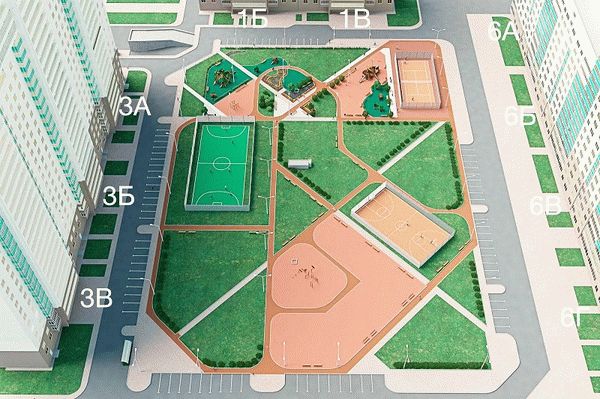
Asphalting
Driveways and parking lots must have a hard asphalt surface. The minimum layer is at least 15 cm. The width of asphalt paths laid around the house is at least 1 m.
Fencing the area near the house
It is prohibited to enclose the adjacent territory of residential buildings with solid fences. It is permissible to use decorative fences made of various building materials (wood, metal, brick, wild stone) with a height of no more than 60 cm or hedges with a height of no more than 1.5 m.
Creating driveways
In the courtyards of multi-apartment buildings, it is mandatory to have driveways (width of at least 3 m), as well as special passages for fire equipment (width of at least 6 m).
landscaping
It is necessary to adhere to the basic rules of current SNiPs regarding the location of trees and other objects (distance from a fence, residential building, etc.):
- trees from the walls of a residential building - 5 m;
- bushes from driveways and driveways - 1.5 m;
- trees from main gas and water supply pipes - at least 2 m.
In addition, major changes to the landscape of the local area must be previously agreed upon with representatives of local government authorities.
Arrangement of a children's playground
There are strict requirements regarding the materials used, as well as design standards for individual elements:
- placement away from driveways, pedestrian paths, parking lots, garbage cans (at least 20 m);
- It is permissible to fence the territory with a solid fence;
- compliance with sanitary standards (timely replacement of sand, regular cleaning, sanitation of play elements, etc.);
- the use of a special rubber coating to reduce injuries during games;
- compliance with standards when designing elements of playgrounds (strength, stability, rigidity, spatial immutability).
This is important to know: Types of land ownership rights
Advice! To receive additional funds for improvement of the local area of an apartment building, residents of the building at a general meeting can decide to rent out part of the land plot (for example, for a grocery kiosk or paid parking).
Improvement of the local area is a prerequisite for the normal living of citizens and ensuring their social rights. The presence of flower beds, a playground, recreation areas, neat paths and cozy lighting in the yard brings the necessary comfort and convenience into the life of the owners.
Complaint about landscaping of local area
The improvement of the adjacent space of an apartment building is the responsibility of the management company that has entered into an agreement with the residents or the homeowners’ association. Organizations must respond as quickly as possible to complaints about rickety swings, cracked paving slabs, or scattered trash. Contact information for the management company, as well as the chairman and active group of the HOA, should be located in places accessible to all homeowners in an apartment building.
In response to grievances being ignored, citizens can resort to the following measures:
- Draw up a collective complaint and submit it to the housing inspectorate or Rospotrebnadzor. The text of the complaint should reflect the main shortcomings in the work of the utility service.
- Contact the prosecutor's office or court if the previous option failed to achieve a result.
Please note:
It is advisable to confirm the information contained in the complaint with photo and video materials. The text of the appeal must contain information about the house number.
An individual or legal entity that commits a violation faces administrative liability.
Landscaping nuances
When performing work aimed at improving the area adjacent to an apartment building, you should remember the following nuances:
- Any event that damages landscaping, road surfaces, lighting, fencing, or damages an existing children's or sports ground is subject to administrative liability and the obligation to compensate for the damage caused.
- The amount of the initial fine for an individual is 2-3 thousand rubles, for an organization or individual entrepreneur - 15-600 thousand rubles.
- Repeated violation is punishable by a fine of 3 to 5 thousand rubles if we are talking about a citizen and from 100 to 1000 thousand rubles if we are talking about a legal entity.
Privatization is an important point. Many entrepreneurs and organizations illegally use the adjacent areas of apartment buildings, placing their retail outlets in places where there should be playgrounds or green spaces. If the apartment owners promptly took care of the privatization of the local area, then the businessman will have to remove the buildings necessary for commercial events.
In addition, privatization clearly defines the boundaries, which makes it possible to analyze the sanitary work being carried out, as well as determine their clear cost. As a result, residents can find out why they transfer funds to utility companies on a monthly basis, and also insure themselves in case of a fire, household gas explosion, collapse, etc.
Comments Showing 0 of 0
